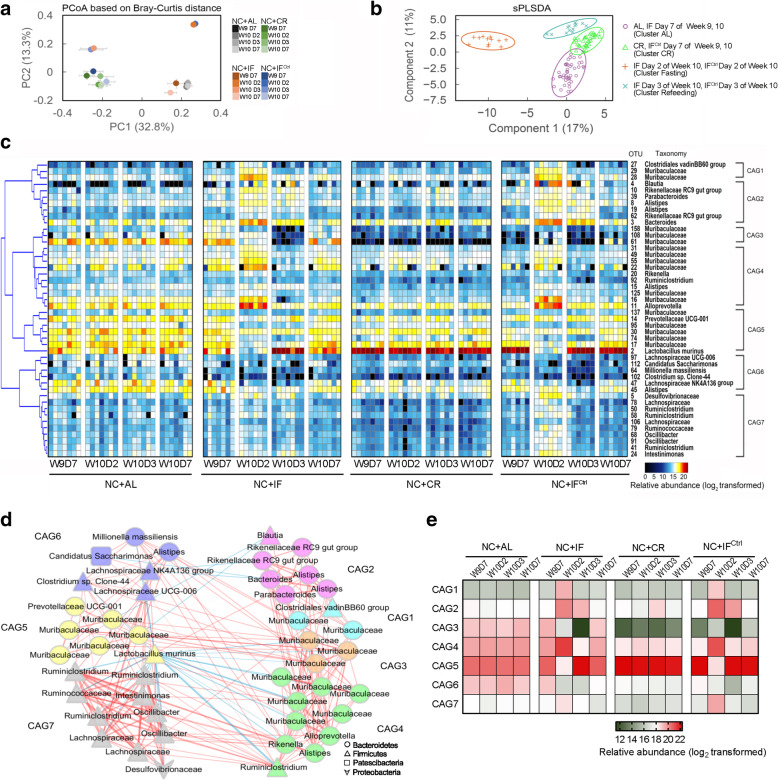Fig. 3.
The gut microbiota structural alterations associated with the three dietary intervention regimens in NC-fed mice. a Principal coordinate analysis (PCoA) based on the Bray-Curtis distances. b Microbiota responding to different interventions based on the sPLS-DA model. All samples from the NC-fed mice at four time points of week 10 were included for discrimination. c Heat map of the 46 OTU-level phylotypes identified as key variables for differentiation among the 4 clusters in the gut microbiota of NC-fed mice by sPLS-DA. The color of the spots represents the relative abundance (normalized and log2-transformed) of the OTU in each sample. The OTUs were organized by Spearman’s correlation analysis based on their relative abundances (left side of heat map). OTU ID numbers and the taxa of the OTUs are shown along the right side of the heat map. d Coabundance network illustrating the interactions among the 46 key OTUs responding to three dietary intervention regimens in the NC-fed mice. The OTUs were clustered into 7 coabundance groups (CAGs) by PerMANOVA when P was < 0.01. Different colors and shapes of nodes represent different CAGs and phyla, respectively. The lines between two nodes represent the correlations between the nodes they connect, with the color saturation and line width indicating the correlation magnitude: red represents a positive correlation, and blue represents a negative correlation. Only lines corresponding to correlations with a magnitude greater than 0.4 were drawn. e Heat map of the relative abundance of each CAG on day 7 of week 9 and day 2, day 3, and day 7 of week 10. The color of the spots represents the total relative abundance (normalized and log2-transformed) of all OTUs in each CAG from each group of NC-fed mice. In all graphs, for each group and each time point, n = 6–7. W, week; D, day

